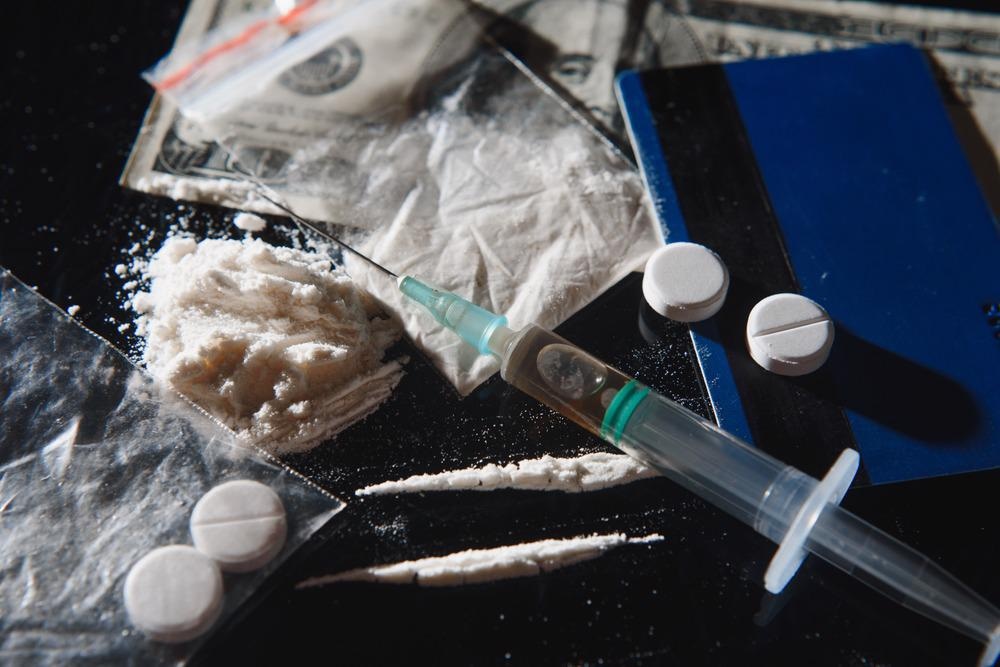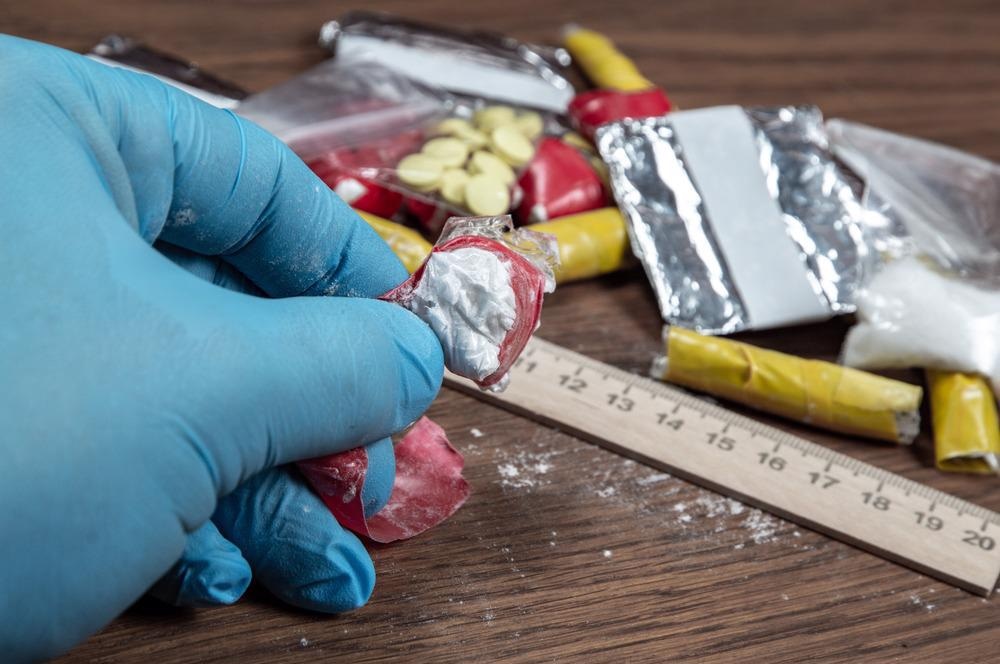Analyzing narcotics in crime labs is an integral part of efforts to keep the dispersion and use of dangerous substances under control. While there are multiple scientific methods that can be used for narcotics analysis, nuclear magnetic resonance (NMR) is particularly innovative and useful.
NMR can reveal important information about a substance, such as its chemical structure, which can help in its identification and quantification. This data, in turn, can be used in legal proceedings to inform judicial decisions about drug crime.
In this interview, Dr. Joerg Koehler and Dr. Marcio-Fernando Cobo from Bruker introduce their forensic distributed lab topology featuring the Fourier 80 CrimeLab with NMR-based narcotics profiling module.
This NMR technology provides innovative solutions to narcotic analysis challenges that forensic analysts face in the lab. The different types of NMR solutions, their user workflows, and advantageous software and database resources will be discussed.
What methods are applied in narcotics testing in the environment of forensic analysis, and how is Bruker involved?
In narcotics testing, there is a range of methods used called orthogonal methods. Orthogonal analytical methods operate on fundamentally different working principles and selectivity. Orthogonal methods in forensic analysis mostly reduce the probability of false-positive results, and the data acquired by these methods lead to more robust evidence for the legal proceedings. In most countries, legislation requires the use of orthogonal methods, but this differs from country to country.
One type of orthogonal method is nuclear magnetic resonance or NMR. There is a very broad application bandwidth in forensics analysis by NMR, which includes narcotics analysis. It can also be applied to doping agents, food adulterations, chemical warfare agents, explosives, and any kind of specialty chemicals, polymers, and even solid waste analysis.
Today, Bruker serves customers within police, customs, federal state and border control labs in more than 40 countries with almost 100 NMR systems running.
Image Credit:Shutterstock/HryshchyshenSerhii
What are the key challenges when it comes to analyzing narcotics?
Finding the widespread distribution of substances is still a constant battle for law enforcement worldwide. The key challenges in narcotics analysis are the unambiguous identification and proper quantification of suspicious substances. Furthermore, the data being acquired and reports being generated need to be robust enough for legal proceedings.
Law enforcement deals with two major classes of substances, the first being classical illicit drugs like cocaine or amphetamine, which still remain in high volume across border traffic. However, the big challenge is newly emerging substances that are designed to mimic classical drugs and avoid detection through a changed chemical structure.
What are NPS, and why are they so challenging?
The newly emerging drugs are called new psychoactive substances (NPS). The United Nations Office on Drug and Crime defines this substance as often used either in a pure form or a preparation that is not controlled by the 1961 Single Convention on Narcotic Drugs or the 1971 Convention on Psychotropic Substances but which may pose a public health threat.
NPS are identified as a key problem area by policing customs, border control agencies, and any forensic specialists. There is still an ever-increasing number of new substances, around 50 to 100 a year. The latest report from the United Nations Office on Drug and Crime in December 2021 reported 1,124 substances being detected in 134 countries.
The nature of these substances makes them hard to identify with commonly applied methods. An automated and reliable identification quantification would be required. In most labs, the focus is clearly on the psychoactive compound. However, real-life samples can be a formulation or a mixture.
Total profiling also includes the cutting agents and the formulations. With this comprehensive profiling, there is further added value, especially to the law enforcement and criminal investigators. If there is the same makeup of the total profile of the drug, cases can be linked to each other, and the drugs should originate from the same drug laboratory or drug kitchen.
What are some advantages of NMR in narcotics analysis?
With this total disclosure of the formulation, methods other than NMR sometimes struggle. For example, gas chromatography struggles with solvents. Optical methods such as infrared sometimes face interference in the spectra – for example, when lactose is present in the sample.
Scientific policing customs authorities worldwide widely accept the method of NMR. The European Commission, in a report from 2014, states, “The chemical identification of many unknown substances found by customs and suspected to be NPS requires the use of more sophisticated analytic techniques, such as NMR.”
Floor standing NMR are high investment instruments that are not present in every lab, but to solve this, you have clusters of forensic networks working together. A benchtop NMR can also identify and quantify on the highest frequency levels.

Image Credit: Shutterstock/busliq
What is Bruker’s distributed laboratory topology approach, and how are the NMR solutions in this approach unique?
Bruker can supply both floor standing and benchtop NMR, and both product lines are operated by the same industry standard software TopSpin. In addition, we equipped the benchtop system with a push-button interface called GoScan. The interplay of both machines leads to a situation where advanced NMR techniques developed on high field NMR systems can also be applied with slight modifications on low field systems with the push of a button.
By bringing these together, Bruker envisions a distributed laboratory topology. At the top level is a forensic authority equipped across platforms and responsible for methods, workflow definition, and database maintenance, all operated by the same control software.
The next level would be a regional forensic center of excellence, a high-level analysis equipped with floor standing instruments. These labs are also responsible for structurization.
At the top level and in the center of excellence, you would have well-trained specialists – the NMR spectroscopists – who run the systems and understand them. The local laboratory requires a different infrastructure and an easy operational system. We provide a push-button solution where identification and quantification are fully automated and operator independent.
Describe Bruker’s fully automated, end-to-end solution for narcotics profiling by benchtop NMR.
Bruker offers users a fully automated workflow in which the only user interaction is to prepare the sample and put the tube into the NMR system. From this moment on, the sample handling, data acquisition, data processing, interpretation, and report generation will be automatic.
Moreover, this new solution is compatible with existing Bruker software. Users can operate this with TopSpin, IconNMR or with the GoScan – brand new software that was developed. This new solution is also compatible with the auto sampler, which means users can do batch measurements and batch analysis.
The workflow is very simple and can be divided into two steps. The first one is the creation of the database that will be used for the identification of the compounds in the substance that you are measuring. This solution comes with a Bruker Starter Kit, which is a database already prepared that contains 87 entries, and out of this, about 56% are narcotics out of this database. You are completely free to edit, add, and remove entries in the database that we provide as well as create and share your own databases within or outside your organization.
The second stage of this workflow is the measurement of the samples that you want to analyze and quantify. The measurement and processing of the spectrum are automatic, and the identification of the compounds takes place by looking at the database that you selected.
The benchtop report topic comes in two formats: PDF and MestreNova. With the MestreNova format, you have even further opportunities to work on the report and customize it. The report will list in a table all the compounds that were identified by the database search and bring together the respective concentrations that were found and further information about the compounds like molar mass and class. The report also has a graphical visualization of your results.
 Image Credit:Shutterstock/MonikaGruszewicz
Image Credit:Shutterstock/MonikaGruszewicz
How do you proceed when your database does not contain a compound that is present in the substance?
With Bruker’s Fourier 80 CrimeLab platform, you can perform additional experiments and use them together with other software solutions that we provide, like broker CMCSE or Mestre Nova Verify, to identify what is inside a substance. Moreover, you could use chromatogram methods to try to separate what is in the mixture. You could also crosscheck the presence of this substance with other databases and libraries that you have, like Mass Spectroscopy or IR.
You could also use the distributed laboratory topology and take the same NMR tube where you prepared your substance, send this to your second level support and ask them to perform further experiments. These could then confirm what the substance is inside your mixture. With this feedback loop, you would be able to isolate the compound itself and measure it in your Fourier 80 CrimeLab. Then, you could add it as a new entry into your database.
Why is using NMR in the distributed lab topology efficient?
In the distributed lap topology, going to the second level support where more sophisticated instrumentation is available makes sense. The beauty of this is the sample is already in a five-millimeter NMR blast tube and sealed. There is no risk of losing or cross-contaminating the sample in any way.
It is non-destructive. Even if the sample comes out with something unexplainable after analysis, the sample is still physically present and can be sent to other labs for other analysis methods. Once we know what this new substance is, we perform an 80 megahertz spectrum on the Fourier 80, feed it back to the database, and distribute the database. From this day on, this new substance can be identified and quantified in a fully automated way.
About Dr. Joerg Koehler 
Dr. Joerg Koehler studied physics and holds a doctoral degree from the Institute of Biophysics and Physical Biochemistry of the University of Regensburg. His research focused on High-Pressure-NMR based studies of folding intermediates of biochemically active macromolecules. After several positions in sales, sales management and business administration he joined Bruker as Head of Business Unit Industrial. Today Dr Joerg Koehler is accountable for Bruker’s global activities in magnetic resonance in various industrial market segments including forensics.
About Dr. Marcio-Fernando Cobo 
Dr. Marcio Fernando Cobo studied physics and holds a doctoral degree from the Institute of Physics of the University of Sao Paulo, Brazil. He worked on development of diverse methods in High Resolution (Solid State and Liquid State) NMR and Time Domain NRM. Dr Marcio Fernando Cobo joined Bruker in 2013, as a Method Developer, developing novel solutions to diverse fields, ranging from Polymer’s characterization and Food quality control to Narcotics Profiling.
About Bruker BioSpin - NMR, EPR and Imaging

Bruker BioSpin offers the world's most comprehensive range of NMR and EPR spectroscopy and preclinical research tools. Bruker BioSpin develops, manufactures and supplies technology to research establishments, commercial enterprises and multi-national corporations across countless industries and fields of expertise.